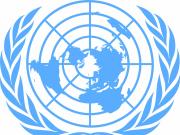According to World Bank, economic growth of East Asia is expected to ease from 6.5% in 2015 to 6.3% in 2016 and 6.2% from 2017 to 2018, reflecting China's gradual shift to slower, more sustainable growth.
The apex bank said China will slow to 6.7% in 2016 and 6.5% in 2017, compared with 6.9% in 2015.
Developing East Asia and Pacific will continue to contribute strongly to global growth, the World Bank report released on Monday showed.
Keeping China out, the region's developing countries grew by 4.7% in 2015, and the pace of growth will pick up slightly to 4.8% in 2016 and 4.9% in 2017 to 2018, driven by growth in the large Southeast Asian economies, the Bank said.
Among the large developing Southeast Asian economies, the Philippines and Vietnam have the strongest growth prospects, both expected to grow by more than 6% in 2016.
In Indonesia, growth is forecast at 5.1% in 2016 and 5.3% in 2017, contingent on the success of recent reforms and implementation of an ambitious public investment program.
"The region accounted for almost two-fifths of global growth in 2015, more than twice the combined contribution of all other developing regions," said Victoria Kwakwa, incoming World Bank East Asia and Pacific Regional Vice President.
The Bank said East Asia has benefited from careful macroeconomic policies, including efforts to boost domestic revenue in some commodity-exporting countries.
"But sustaining growth amid challenging global conditions will require continued progress on structural reforms," said Kwakwa.
At the same time, several small economies, including Laos, Mongolia and Papua New Guinea, will continue to be affected by low commodity prices and weaker external demand.
Cambodia's growth will be slightly below 7% during 2016 to 2018, reflecting weaker prices for agricultural commodities, constrained garment exports, and moderating growth in tourism. In the Pacific Island countries, growth is likely to remain moderate.
Slower-than-expected global growth could hurt growth in developing East Asia and Pacific, especially among commodity exporters, the Bank said.
Therefore, it calls for close monitoring of economic vulnerabilities, particularly those associated with high levels of debt, price deflation, and slower growth in China, and high corporate and household debt in some other large economies.









